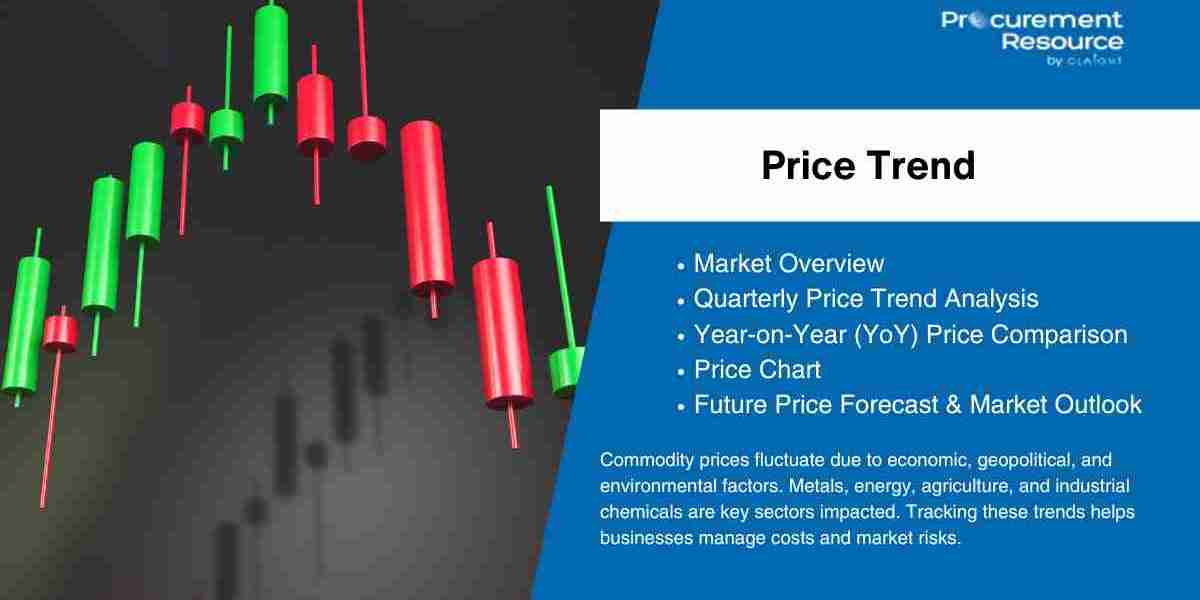Cobalt, a critical component in lithium-ion batteries, aerospace alloys, and various industrial applications, has experienced significant price fluctuations in recent years. As of April 2025, the cobalt market is navigating through a complex landscape shaped by oversupply, evolving battery technologies, and geopolitical factors. This comprehensive analysis delves into the current cobalt prices, trend, historical context, key market drivers, and future forecasts, providing valuable insights for stakeholders in the industry.
Historical Overview of Cobalt Prices
Cobalt prices have historically been volatile, influenced by supply constraints, demand surges, and geopolitical events. In March 2018, cobalt prices peaked at an all-time high of $95,250 per metric ton, driven by anticipated demand from the burgeoning electric vehicle (EV) sector. However, subsequent years saw a decline due to oversupply and shifts in battery technology preferences.
By 2022, prices had dropped to approximately $82,000 per metric ton, and further declined to $21,550 in early 2025, marking the lowest levels since 2010. This downward trend reflects the market's response to increased production and changing demand dynamics.
Enquire For Regular Prices : https://www.procurementresource.com/resource-center/cobalt-price-trends/pricerequest
Current Market Conditions (2025)
As of the first quarter of 2025, cobalt is trading at approximately $24,300 per metric ton. The market is characterized by:
- Oversupply: A surplus of 28,000 metric tons is projected for 2025, down from 53,000 metric tons in 2024, yet still above the 21,000 metric tons surplus in 2023.
- Production Dynamics: The Democratic Republic of Congo (DRC) remains the dominant producer, accounting for over 70% of global supply. However, production growth is tapering as major players like China's CMOC Group reach the end of their capacity expansions.
- Demand Factors: While demand from the EV sector continues to grow, the shift towards lithium iron phosphate (LFP) batteries and the dependency of lithium prices, which do not require cobalt, is impacting overall demand.
Key Market Drivers
1. Supply Side Factors
- DRC's Dominance: The DRC's significant contribution to global cobalt supply makes the market susceptible to regional disruptions. Recent export halts aimed at stabilizing prices highlight the country's influence on global supply chains.
- Indonesian Expansion: Indonesia's rapid growth in mixed hydroxide precipitate (MHP) production, used in battery manufacturing, is reshaping the supply landscape. The country's share of global cobalt supply increased from 7% in 2023 to 10% in 2024, with further growth anticipated.
- Byproduct Production: Cobalt is often produced as a byproduct of copper and nickel mining. Increases in copper and nickel production, particularly in the DRC and Indonesia, contribute to higher cobalt output, exacerbating oversupply issues.
2. Demand Side Factors
- EV Market Trends: The global shift towards electric mobility continues to drive cobalt demand. However, the adoption of LFP batteries, especially in China, is reducing cobalt's role in battery chemistries.
- Technological Advancements: Innovations in battery technology aim to reduce or eliminate cobalt usage, impacting long-term demand projections.
- Geopolitical Considerations: Trade tensions and efforts to secure critical mineral supply chains are influencing demand patterns. For instance, the U.S. has imposed tariffs on Chinese cobalt imports, affecting market dynamics.
Expert Commentary
Industry experts provide insights into the current market situation:
- Joel Crane, Cobalt Blue Holdings: "Output in the DRC surged almost 60,000 metric tons since 2022, largely due to CMOC's rapid commissioning of Kisanfu. However, production growth is expected to slow to 5,000–10,000 metric tons in 2025 as new projects dwindle."
- Roman Aubry, Benchmark Mineral Intelligence: "Oversupply has been the dominant driving force for cobalt prices since 2023, and this is likely to persist in 2025. The overwhelming supply has stifled market volatility."
Future Market Forecasts
Looking ahead, several factors will shape the cobalt market:
- Supply Adjustments: The anticipated slowdown in production growth, particularly in the DRC, may help ease oversupply pressures.
- Demand Growth: Despite current challenges, cobalt demand is projected to rise, driven by the EV sector and other industrial applications. The International Energy Agency forecasts demand to increase from 213,000 metric tons in 2023 to 344,000 metric tons by 2030.
- Price Stabilization: Analysts expect cobalt prices to remain subdued in the near term due to persistent oversupply. However, potential supply constraints and rising demand could lead to gradual price recovery in the longer term.
Contact Information
Company Name: Procurement Resource
Contact Person: Ashish Sharma (Sales Representative)
Email: sales@procurementresource.com
Location: 30 North Gould Street, Sheridan, WY 82801, USA
Phone:
UK: +44 7537171117
USA: +1 307 363 1045
Asia-Pacific (APAC): +91 8850629517








